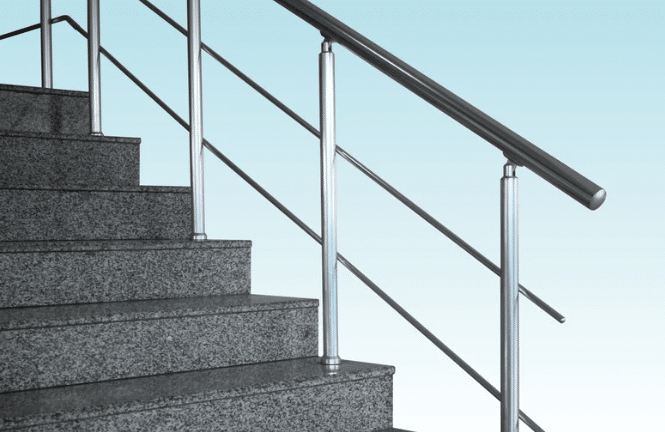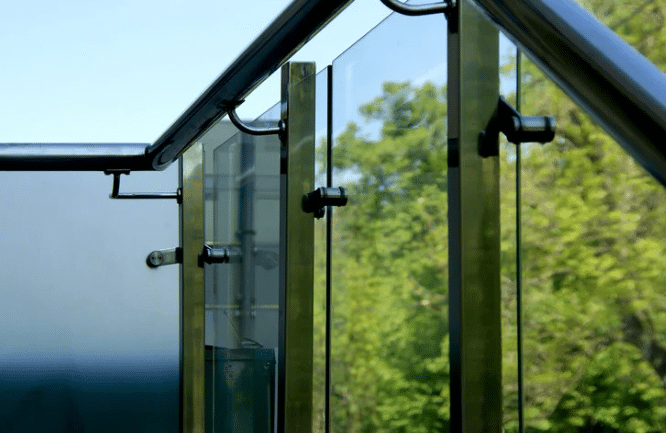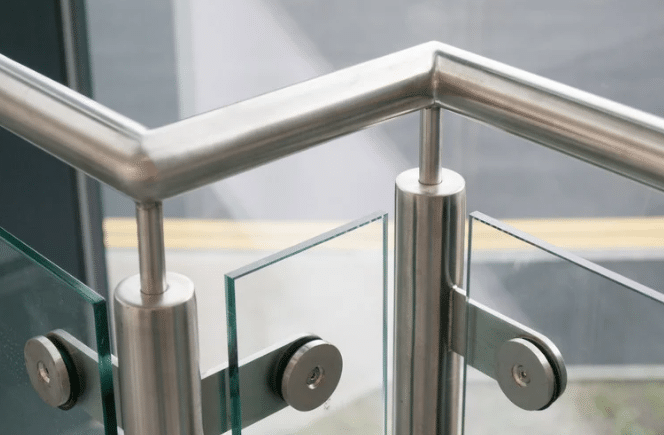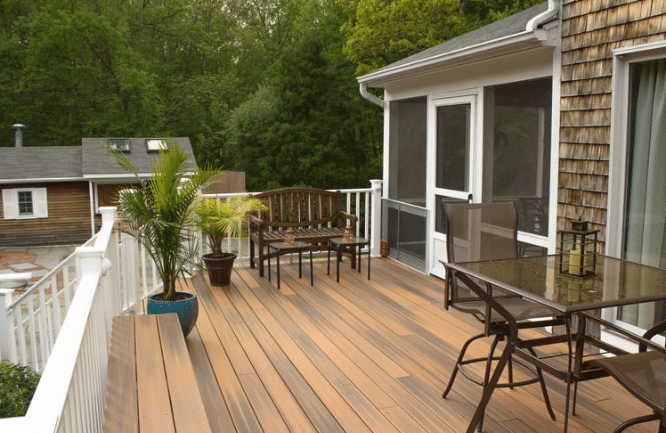Discover whether you need a handrail or stair rail for your next project. We break down functionality, safety, and legal standards!
When it comes to staircase safety and design, stair rails and handrails often get mixed up. They may look alike, but they serve different purposes. Knowing the difference between a handrail and a stair rail helps homeowners and builders choose the right one for safety, appearance, and code requirements.

A handrail supports walking up or down stairs, while a stair rail prevents falls from open edges. This guide explains the key differences, uses, and safety rules for handrail vs stair rail systems. Knowing both helps you choose the correct safe setup that meets code.
What Is a Handrail
A handrail is a rail designed to support and stabilize individuals using a staircase or ramp. It is typically grasped by hand to assist with balance and prevent falls. Handrails are required in most residential and commercial buildings by building codes such as the International Building Code (IBC) and the Americans with Disabilities Act (ADA).
What Is a Stair Rail
A stair rail, sometimes called a guardrail, is a protective barrier installed along the open sides of a staircase, balcony, or elevated walkway to prevent falls. Unlike a handrail, which is meant to be gripped, a stair rail is a physical barrier.
Handrails vs. Stair Rails: Which One Do You Need
While both handrails and stair rails contribute to staircase safety, they serve different functions. Here’s a breakdown of their primary distinctions:
1. Purpose
- Handrail: Designed to be held for support while ascending or descending stairs.
- Stair Rail: Acts as a protective barrier to prevent falls off the side of the stairs.
2. Installation Requirements
- Handrail: Required on stairs with four or more risers (according to most building codes).
- Stair Rail: Mandatory for any open-sided stairway, deck, or balcony 30 inches or higher above the ground.
3. Height & Dimensions
- Handrail: Positioned at 34–38 inches from the stair nosing.
- Stair Rail: Typically 36–42 inches tall, with strict baluster spacing rules.
4. Graspability
- Handrail: Must be shaped for easy gripping (round or oval profiles are typical).
- Stair Rail: It does not need to be graspable, but sturdy enough to resist impact.
Understanding these differences ensures compliance with safety regulations and helps select the right option for your project.
When Do You Need a Handrail vs Stair Rail

Choosing between a handrail and stair rail depends on your staircase design and local building codes.
1. Scenarios Requiring a Handrail:
- Residential staircases with four or more steps.
- Commercial buildings where ADA compliance is mandatory.
- Elderly or mobility-impaired users who need extra support.
2. Scenarios Requiring a Stair Rail:
- Open-sided staircases where a fall hazard exists.
- Decks, balconies, or elevated walkways over 30 inches high.
- Homes with small children should take precautions to prevent accidents.
In many cases, staircases require both a handrail and a stair rail for maximum safety.
Building Codes and Compliance for Stair Rails
Building codes vary by location, but most adhere to guidelines from the International Residential Code (IRC) or the Americans with Disabilities Act (ADA). Here’s what you need to know:
1. Handrail Codes:
- It must be continuous along the entire length of the stairs.
- Should return smoothly into a wall or post to prevent snagging.
- Must support at least 200 lbs of force.
2. Stair Rail Codes:
- Minimum height of 36 inches (residential) or 42 inches (commercial).
- Balusters are spaced no more than 4 inches apart.
- Must resist 50 lbs of pressure per square foot.
Failing to meet these requirements can result in failed inspections or liability issues in accidents.
Material Choices for Handrails & Stair Rails
Both handrails and stair rails come in various materials, each offering different aesthetics and durability.
1. Common Handrail Materials:
- Wood: Classic and warm, ideal for traditional homes.
- Metal (Aluminum, Steel, Wrought Iron): Durable and modern.
- Glass or Acrylic: Sleek and contemporary, often used with metal supports.
2. Common Stair Rail Materials:
- Wood: Matches well with wooden handrails.
- Metal (Wrought Iron, Steel): Provides a strong barrier.
- Cable or Wire: Minimalist and modern, but must meet safety spacing rules.
Choosing the right material depends on your design preferences, budget, and willingness.
How to Choose Stair Rails for the Best Look
While safety is the top priority, aesthetics also play a role in choosing between a handrail and vs. stair rail.
1. Modern Style

Modern homes often use metal or glass handrails for a clean, simple look. These materials match well with open spaces and large windows. Minimalist stair rails help your home feel bigger and more open. This design adds a fresh, stylish touch to any staircase.
2. Traditional Look
Wooden handrails are an excellent choice for traditional homes. Paired with decorative balusters, they add warmth and a classic feel. You can stain or paint them to match your home. This style fits cozy, timeless designs and adds beauty to your staircase.
3. Industrial Design
Homes with an industrial style look great with black metal handrails and cable stair rails. This design feels strong and bold, yet simple. It works well with exposed beams, brick walls, and open floor plans. It gives your stairs a clean and modern edge.
How to Choose the Right Handrail vs Stair Rail for Your Home
Selecting the right handrail vs stair rail involves balancing safety, functionality, and design. Here are key factors to consider:
1. Assess Your Staircase Design
- Open-sided stairs need a stair rail for fall protection.
- Narrow staircases may only require a handrail on one side.
2. Consider User Needs
- Families with children or elderly members benefit from both handrails and stair rails.
- Commercial spaces must follow ADA guidelines for accessibility.
3. Match Your Home’s Style
- Choose materials and finishes that complement your interior or exterior design.
By evaluating these factors, you can make an informed decision that meets both safety and aesthetic needs.
Installation Tips for Handrails and Stair Rails
Proper installation is important for both handrails and stair rails to function safely. Here are some best practices:
Handrail Installation Tips:
- Ensure the height is consistent (34–38 inches from the stair nosing).
- Securely anchor the handrail to wall studs or posts.
- Use rounded edges to prevent injuries.
Stair Rail Installation Tips:
- Verify baluster spacing (no more than 4 inches apart).
- Reinforce connections to withstand pressure.
- Check local codes for height requirements (usually 36–42 inches).
Hiring a professional ensures compliance and long-term durability.
Frequently Asked Questions
What’s the difference between a handrail and a stair rail?
A handrail is what you hold onto while walking up or down stairs. A stair rail, also called a guardrail, runs along open sides of stairs or landings to stop falls. Handrails give support, while stair rails help prevent people from falling off the edge.
Do you legally need a handrail on stairs?
Yes, most building codes require a handrail if there are four or more steps. The rules may vary by location, so always check local codes. Handrails are essential for safety, especially for children, older adults, and anyone who needs extra support when using stairs.
What is another name for a staircase handrail?
Another name for a staircase handrail is a banister. People also call it a railing or stair rail. All these names refer to the part of the stairs that helps you keep your balance and adds safety when going up or down steps.
Do I need a handrail for three steps?
You do not need a handrail for only three steps in many places, but it’s still a good idea for safety. Rules can vary depending on your local building codes. Adding a handrail helps prevent slips, especially if the steps are outside or steep.
Can you build stairs without a handrail?
You can build stairs without a handrail in some cases, like if there are fewer than four steps and local rules allow it. But it’s better to add a handrail for safety, especially if the stairs are high, steep, or used often.
Conclusion
Choosing between a handrail and a stair rail can shape the safety and look of your space. Whether building a new staircase or fixing an old one, knowing the difference between handrail and stair rail helps you stay safe and follow building rules correctly.
We’re here for you if you need help with stair rail installation, repairs, or upgrades. We also offer fast, simple gate repair services to secure your home. Call us now at 888-588-1470 for a quick quote and friendly support you can trust.
Rolling Gates takes pride in making homes safer and better-looking. Our skilled team handles everything from stair rail work to driveway gate fixes with care and quality. Let us help with your next project. Call today and see how we make things easy.
End Note
Are you planning a stair safety upgrade or custom railing? Our team at Rolling Gates handles everything from design to installation. We also install automatic driveway gates and intercom systems and provide trusted gate repairs in Marin County and San Francisco.
Explore our gallery to see the quality work we’ve done on gates and railings. Visit our blog for tips and helpful updates. Follow us on Facebook, Instagram, and X. Read our Yelp reviews to see why customers trust us.
Start your project by visiting our contact page. We simplify each step, from the first call to the final install. Whether you need a small repair, a full gate system, or new stair railings, we are ready to help make your property safer and better.
Rolling Gates
Walnut Creek, CA 94596
+18885881470





